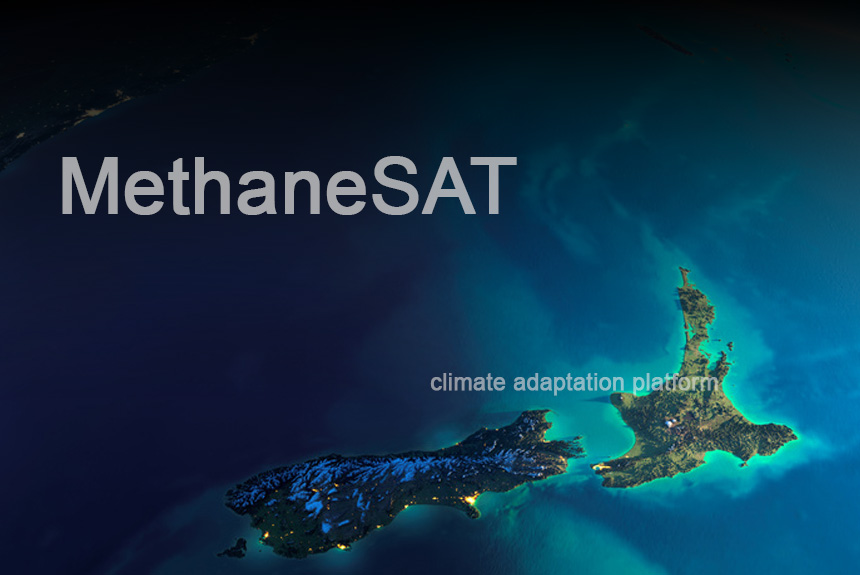MethaneSAT, a washing-machine-sized satellite, was launched from Vandenberg Space Force Base in California on a SpaceX rocket on March 4, 2024.
The space mission launch is jointly operated and funded by the US Environmental Defense Fund (EDF), a global non-profit organisation tackling climate change and the New Zealand Space Agency. The satellite launch is particularly significant to New Zealand because it is the country’s first space science mission.
MethaneSAT will see and quantify total methane emissions over wide areas other satellites can’t and identify large emitters in places they aren’t looking. Data from MethaneSAT will enable companies and regulators to track emissions and give stakeholders citizens, governments, and investors—free, near-real-time access to the data and the unprecedented ability to compare the results against emission goals and obligations.
The ground-breaking satellite is designed to protect the Earth’s climate by accelerating reductions of a powerful greenhouse pollutant, focusing first on oil and gas operations, a major source of methane.
Methane is responsible for 30% of the global heating driving the climate crisis. Leaks from the fossil fuel industry are a major source of human-caused emissions, and slashing them is the fastest way to limit temperature rises.
Specification of MethaneSAT
Existing satellites can detect methane emissions. Each one is important and can complement and strengthen the others. These systems differ in scale, precision, and data usage.
Steven Hamburg, EDF Chief Scientist and MethaneSAT project leader, says that “MethaneSAT’s superpower is the ability to precisely measure methane levels with high resolution over wide areas, including smaller, diffuse sources that account for most emissions in many regions,” Adding that “Knowing how much methane is coming from where and how the rates are changing is essential” (MethaneSat, 2024).
MethaneSAT is a single satellite that will circle the Earth 15 times a day at an altitude of 590km. It has a wide field of view and a high-precision instrument capable of mapping and quantifying methane emissions from large swaths of land—about 200 km or approximately 125 miles. The satellite also costs a fraction of the cost of most space missions. Additionally, data gathered from the satellite will be free and accessible to the public.
The Guardian reports that MethaneSat is to “name and shame” the worst methane polluters in the oil and gas industry. Methane is responsible for 30% of global warming, which causes climate change, and leaks from the oil and gas industry are major sources of methane emissions.
The US project focuses on methane leaks from oil and gas production, while the New Zealand-led agricultural programme studies global emissions from agriculture, such as ruminant farming and rice production.
In New Zealand, MethaneSAT is the county’s first government-funded space mission, investing $29 million into the mission.
MethaneSAT partner New Zealand is the country’s first government-funded space mission. The country will actively participate in the MethaneSAT space mission through the new mission control centre at Te Pūnaha Ātea-Space Institute at the University of Auckland. Auckland’s space institute will take over mission control operations of the satellite up to 12 months after launch.
Dr Sara Mikaloff-Fletcher, New Zealand’s NIWA scientist and programme leader of the country’s agricultural emissions science programme, says that New Zealand provides the perfect test ground for the MethaneSAT agricultural programme because it has an unusual greenhouse gas profile and world-class greenhouse gas measurement and modelling capability (NIWA Scientists, 2024).
Compared to other developed nations, where carbon dioxide accounts for the largest share of GHG emissions, New Zealand’s biggest GHG source is methane. Eighty-five per cent of this comes from agriculture, but the biggest proportion is spewed out by livestock.
Watch NIWA’s video about the MethaneSAT.
Learn more about MethanSAT by clicking the link below:
MethaneSAT: Putting the Brakes on Climate Change
Source:
MethaneSAT Now in Orbit after SpaceX Launches Groundbreaking Mission to Protect the Climate. (2024, March 4). Environmental Defence Fund. Retrieved from https://www.edf.org/media/methanesat-now-orbit-after-spacex-launches-groundbreaking-mission-protect-climate
Carrington, D. (2023 March 4). Satellite to ‘name and shame’ worst oil and gas methane polluters. The Guardian. Retrieved from https://www.theguardian.com/environment/2024/mar/04/satellite-to-name-and-shame-worst-oil-and-gas-methane-polluters
NIWA scientists leading Aotearoa New Zealand’s MethaneSAT agricultural emissions science programme are gearing up for the launch of its satellite in coming weeks. (2024 February 16). NIWA. Retrieved from https://niwa.co.nz/news/scientists-counting-down-to-methanesat-satellite-launch
University to operate methane tracking satellite. (2024, March 4). University of Auckland. Retrieved from https://www.auckland.ac.nz/en/news/2024/03/04/university-to-operate-methane-tracking-satellite.html



Leave a Reply